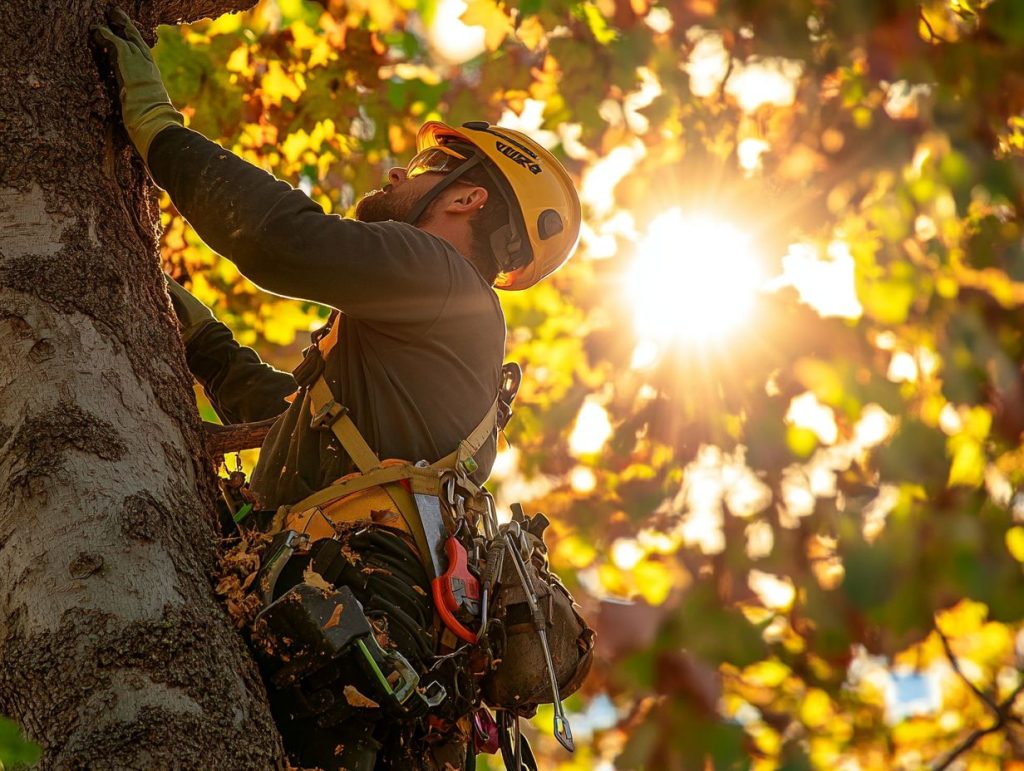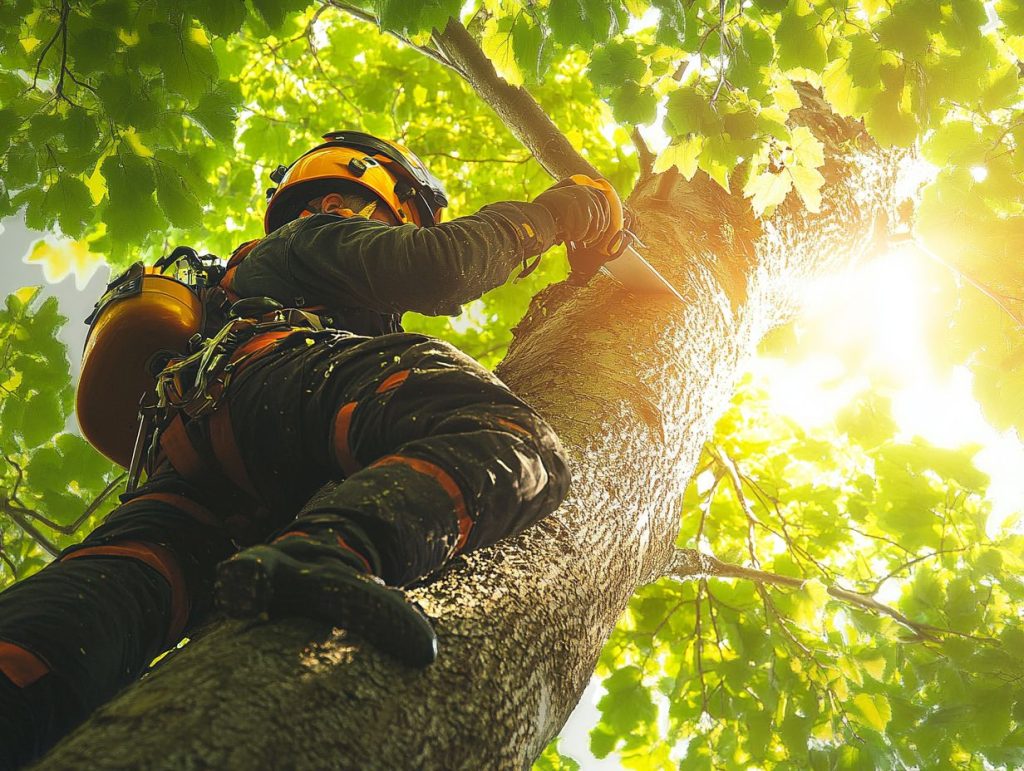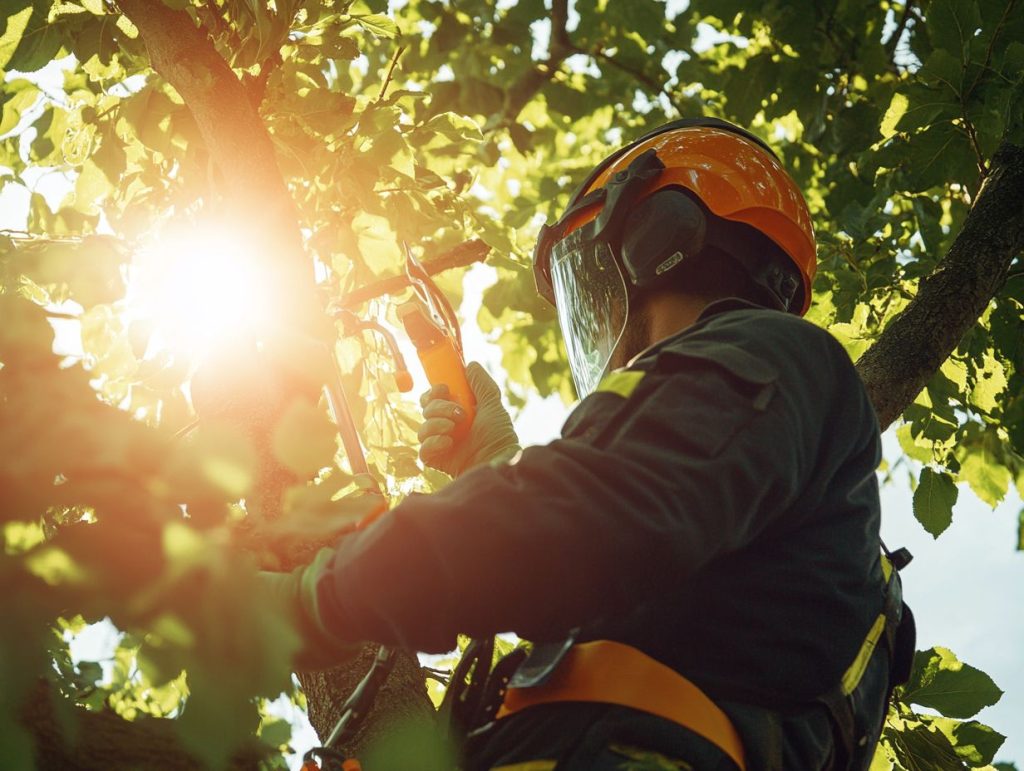Trees are more than just beautiful additions to our landscapes; they play a crucial role in our environment, providing shade, oxygen, and habitats for wildlife. Maintaining the health of these magnificent living structures requires regular care and attention.
Some of our leading arborists share their thoughts on the importance of tree care for a thriving landscape and focuses on the advantages of hiring a professional tree surgeon. From pruning and trimming to health assessments and timely interventions, discover how proper tree care can enhance the beauty and longevity of your trees.

The Importance of Regular Tree Care
Regular tree care is essential for keeping your landscape healthy and enduring, boosting your property’s value and helping the environment. Whether you want to enhance your garden’s appearance or ensure your trees are thriving, adhering to a consistent maintenance schedule can genuinely improve the vitality of your trees and the ecosystem around them.
By understanding how tree care contributes to biodiversity and environmental services, you can truly see why it’s important to incorporate sustainable practices into your routine.
Why Tree Care is Essential for a Healthy Landscape
Tree care is crucial for maintaining a healthy landscape because it directly impacts the vitality of different tree species and the overall ecosystem. By making regular tree assessments and implementing the right care strategies, such as disease prevention and pruning, you can create a thriving environment that supports biodiversity and enhances your landscape’s appeal.
When you practise proper tree maintenance—such as mulching, watering, and managing the soil—you strengthen individual trees and create a rich habitat for the plants and animals around you. This holistic approach to tree care ensures that these essential organisms continue to thrive while adding aesthetic benefits, such as improved curb appeal and increased property value.
Over time, your commitment to nurturing tree health through effective care techniques will lead to stronger canopies, better air quality, and a more resilient ecosystem. This sets the stage for long-lasting beauty and functionality in your outdoor space.

Benefits of Hiring a Professional Tree Surgeon
Employing a professional tree surgeon has numerous benefits. It ensures that your trees receive the best care possible, crucial for their health, longevity, and overall appearance.
With their expertise in tree biology and arboricultural practices, tree surgeons provide excellent professional advice and assist you in implementing safety standards, managing risks, and devising effective tree management solutions tailored to your landscape’s unique needs.
Expertise and Equipment
Tree service professionals’ expertise and specialised equipment are invaluable for effective tree care. They can tackle tasks that require real skill and precision. From using advanced tree diagnostics tools to conducting arborist consultations, these professionals ensure your trees are pruned and maintained properly, which boosts their health and resilience.
When you face situations like figuring out the right time for tree removal or treating pests and diseases, tree surgeons rely on their tailored equipment to do the job. Think chainsaws for felling trees, stump grinders for removing remnants, and aerial lifts for reaching those high-up limbs—these tools are essential for their work.
Their training allows them to spot root rot or structural weaknesses that could harm the tree and the surrounding landscape. In cases of storm damage or severe weather, their assistance minimises hazards. It prevents further damage to your property, highlighting just how crucial professional tree care is for keeping things safe and beautiful.
Ensuring Safety and Preventing Damage
Ensure safety and prevent damage when caring for trees, especially in urban areas where trees can pose risks to public safety. By adhering to safety standards and conducting thorough hazard assessments, you can help professional tree surgeons minimise risks related to storm damage and plan for effective tree removal when necessary.
Taking a proactive approach to safety means undertaking regular inspections to spot weak branches, decayed wood, or root instability—issues that can lead to hazardous situations. For example, after a severe storm in a busy neighbourhood, a professional tree care service assessed damaged trees and removed precarious limbs that could have fallen and injured pedestrians.
Integrating storm preparedness tactics, such as securing critical trees and educating the public about safety protocols, is essential for preventing accidents. These measures protect lives and safeguard property, highlighting why engaging qualified professionals for all your tree maintenance needs is important.

Types of Tree Care Services
Understanding the different types of tree care services available helps you keep your garden looking great and your trees healthy for the long term.
Services such as pruning and trimming, tree removal, stump grinding, and comprehensive tree health assessments are crucial in effective tree management. Trees play a significant role in enhancing your overall garden, so knowing what is available to you is good.
Pruning and Trimming
Pruning and trimming are essential practices that enhance your tree’s structure and promote growth. Effective pruning techniques at the right times throughout the seasons can keep your trees healthy, looking great, and full of life.
Different pruning methods, such as crown thinning, crown raising, and shaping, are crucial for managing tree health and guiding growth in the right direction. Seasonal care matters a great deal, too, as trees react differently to pruning based on the time of year. For example, late winter or early spring is often the ideal time for deciduous trees, while summer pruning can work wonders for fruiting varieties.
Understanding the specific needs of different tree species is critical because using the wrong timing or techniques can lead to unwanted growth patterns or damage your trees. To achieve the best results, always ensure your tools are sharp and clean and pay attention to the shape and thickness of the branches you trim. This will encourage healthier and more robust growth.
Tree Removal and Stump Grinding
Tree removal and stump grinding are essential services that address safety issues and enhance the appearance of your garden. If you have a tree that is a hazard or not salvageable, having it professionally removed is crucial. After that, you will want to grind the stump down to make way for new trees or other landscaping improvements.
You might need this done for numerous reasons, such as if the tree is diseased, unstable, or encroaching on utility lines. Any of these issues could put nearby structures or people at risk. Furthermore, a decaying tree or its extensive root system can significantly disrupt your plans for a beautifully designed outdoor space.
Hiring professionals for these tasks ensures that the tree and stump are removed safely—reducing the risk of accidents—and allows for a smooth transition in your garden. This sets the stage for revitalisation and growth. Their expertise helps keep your garden’s elegant lines intact, making engaging in future landscaping projects easier.
Tree Health Assessments and Treatments
Conducting tree health assessments and implementing treatments are essential parts of effective tree care. This way, you can manage potential diseases and pests before they become a major issue. With professional advice and proper tree diagnostics, you can identify problems early and take action to prevent further damage, which helps keep your trees healthy overall.
By having regular evaluations, experienced arborists can help you uncover early signs of distress, such as unusual leaf discolouration or stunted growth, which might indicate underlying health concerns. This proactive approach reduces the risks from pests and pathogens and helps you create a tailored maintenance strategy.
When you work with tree care professionals, you can develop a comprehensive maintenance schedule that includes timely treatments and proactive measures. These strategies ensure your trees remain resilient and vibrant, ultimately contributing to a healthier ecosystem.
When to Schedule Tree Care Services
Knowing when to schedule tree care services is vital to keeping your trees healthy and looking their best. Certain tasks are best tackled during specific seasons, so awareness is good.
By looking for signs that your trees need some care and understanding how often different services should be carried out, you can create a maintenance schedule that helps your trees thrive for years.
Signs that Your Trees Need Attention
Identifying signs that your trees need some TLC is essential for keeping them healthy and avoiding potential hazards. If you notice reduced vigour, pest infestations, or visible diseases, it’s time to take action—this could involve identifying hazards and consulting with a tree care professional.
When you check your trees, look for changes in leaf colour, stunted growth, or discoloured bark. These are all red flags that something might be amiss. Environmental stresses, such as prolonged drought or excessive moisture, can exacerbate these issues, so swift intervention is critical. If you spot pests like aphids or borers, don’t wait too long—they can cause serious damage if left unchecked.
Providing professional services for a thorough assessment can give you peace of mind. Experts know how to diagnose problems accurately and recommend the right treatments, helping to ensure that your trees remain strong and vibrant for years to come.
Recommended Frequency of Tree Care
Establishing the right frequency for your tree care services is essential for keeping your trees healthy and your landscape looking great. Regular assessments, seasonal pruning, and timely interventions based on the type of tree and environmental conditions will help you create an effective maintenance schedule that supports long-term tree health and vitality.
Consider the tree’s growth patterns, age, and the local climate when determining your care schedule. For example, if you have a fast-growing species, they might need more frequent pruning than their slower-growing counterparts.
Remember the seasonal changes! Spring is often the best time to prune many tree species to encourage healthy growth, while autumn is all about clearing up those fallen leaves and debris.
Documenting your observations throughout the year is a great idea for creating a personalised maintenance plan. This will give you valuable insights into each tree’s specific needs, ensuring that your care efforts are timely and effective.